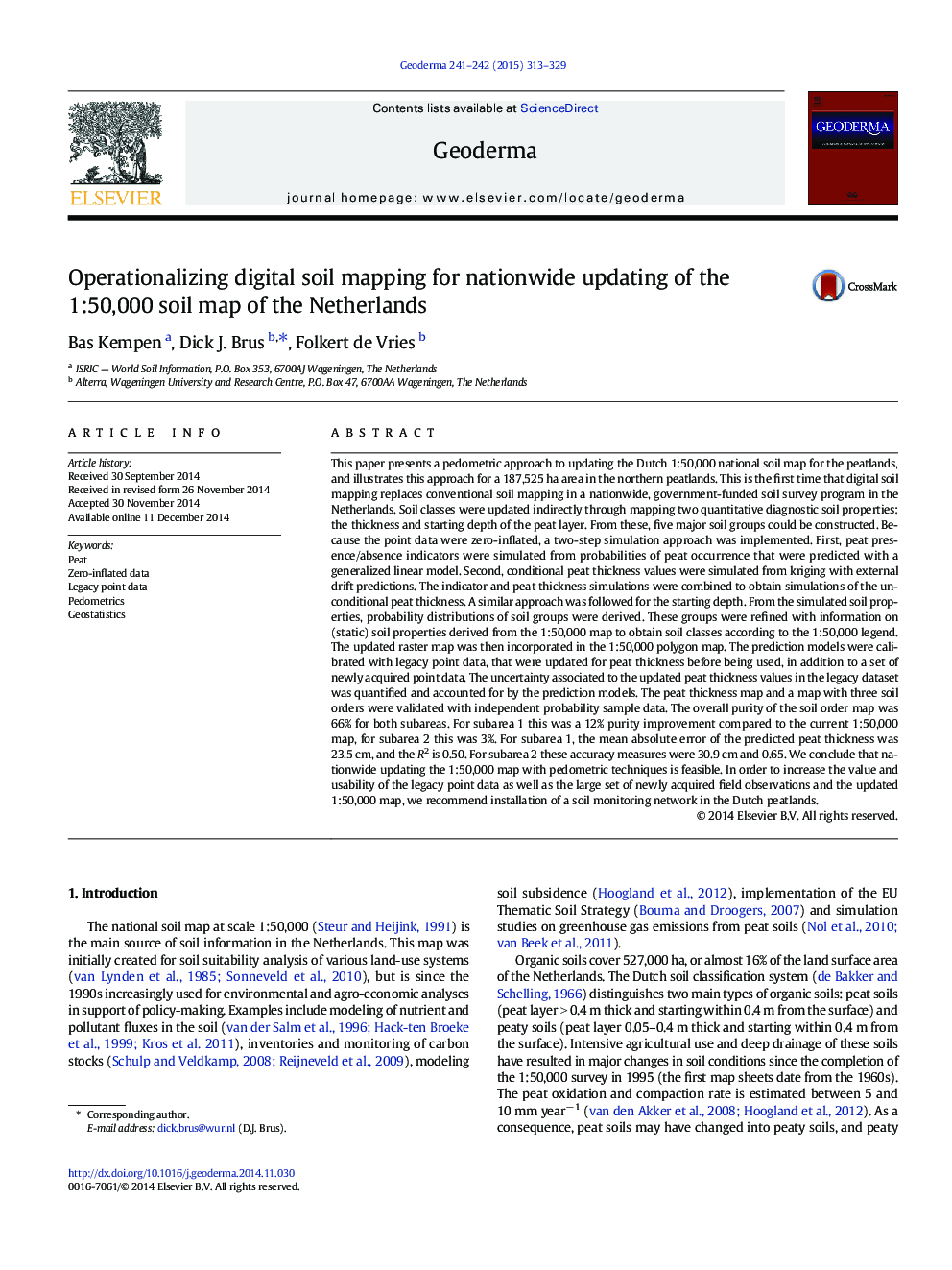| کد مقاله | کد نشریه | سال انتشار | مقاله انگلیسی | نسخه تمام متن |
|---|---|---|---|---|
| 6408627 | 1629465 | 2015 | 17 صفحه PDF | دانلود رایگان |
- For the first time pedometric mapping was used in a Dutch nationwide mapping program.
- The national soil map was updated through updating of quantitative soil properties.
- A two-step simulation approach was implemented to allow modeling of zero-inflated data.
- Legacy point data were updated and integrated with newly acquired data.
- Uncertainty of updated legacy data was quantified and accounted for by the model.
This paper presents a pedometric approach to updating the Dutch 1:50,000 national soil map for the peatlands, and illustrates this approach for a 187,525Â ha area in the northern peatlands. This is the first time that digital soil mapping replaces conventional soil mapping in a nationwide, government-funded soil survey program in the Netherlands. Soil classes were updated indirectly through mapping two quantitative diagnostic soil properties: the thickness and starting depth of the peat layer. From these, five major soil groups could be constructed. Because the point data were zero-inflated, a two-step simulation approach was implemented. First, peat presence/absence indicators were simulated from probabilities of peat occurrence that were predicted with a generalized linear model. Second, conditional peat thickness values were simulated from kriging with external drift predictions. The indicator and peat thickness simulations were combined to obtain simulations of the unconditional peat thickness. A similar approach was followed for the starting depth. From the simulated soil properties, probability distributions of soil groups were derived. These groups were refined with information on (static) soil properties derived from the 1:50,000 map to obtain soil classes according to the 1:50,000 legend. The updated raster map was then incorporated in the 1:50,000 polygon map. The prediction models were calibrated with legacy point data, that were updated for peat thickness before being used, in addition to a set of newly acquired point data. The uncertainty associated to the updated peat thickness values in the legacy dataset was quantified and accounted for by the prediction models. The peat thickness map and a map with three soil orders were validated with independent probability sample data. The overall purity of the soil order map was 66% for both subareas. For subarea 1 this was a 12% purity improvement compared to the current 1:50,000 map, for subarea 2 this was 3%. For subarea 1, the mean absolute error of the predicted peat thickness was 23.5Â cm, and the R2 is 0.50. For subarea 2 these accuracy measures were 30.9Â cm and 0.65. We conclude that nationwide updating the 1:50,000 map with pedometric techniques is feasible. In order to increase the value and usability of the legacy point data as well as the large set of newly acquired field observations and the updated 1:50,000 map, we recommend installation of a soil monitoring network in the Dutch peatlands.
Journal: Geoderma - Volumes 241â242, March 2015, Pages 313-329
